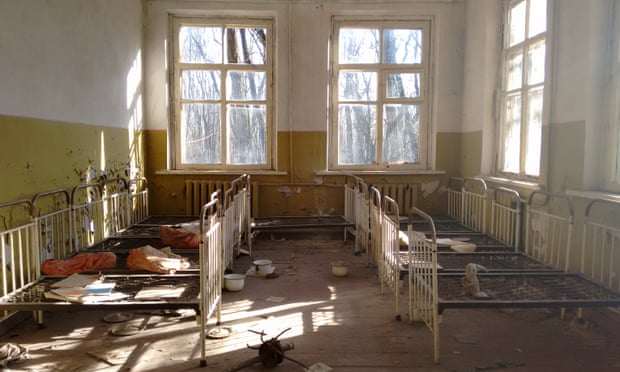- UID
- 20
- Online time
- Hours
- Posts
- Reg time
- 24-8-2017
- Last login
- 1-1-1970
|
|
━━━━━━━━━━━━━━━━━
Dark tourism taps into a mix of morbid curiosity, voyeurism and pilgrimage. But is it ethical?

Abandoned buildings in Pripyat, Ukraine, near the site of the Chernobyl nuclear disaster. Photograph: Jessica Alice
▼ In early 2016, I went on a Soviet Europe tour run by a company that specialises in “destinations your mother would rather you stay away from”. One of their most popular tours is North Korea. My partner had already been to DPRK, and now wanted to head to Eastern Europe to Ukraine, specifically to visit the nuclear disaster site ofChernobyl.
This was before HBO’s Chernobylor Netflix’s Dark Tourist, and the only recent references I’d seen were gauche B-grade horror films that exploited stereotypes about radiation mutations. I was sceptical it was even possible to visit. I expected that there would be bribery and deals to get us in – but of course there were not. The site has been open to the public since 2010. And when we rolled up to the border of the exclusion zone, about 150km north of the capital Kyiv, we waited in a queue of white tour buses for about half an hour.
Visiting Chernobyl is a strange experience: you’re body scanned at the border to test radiation levels and you’re required to sign a waiver acknowledging the risks associated with encountering radiation. The theatre of that aside, the levels within the zone are safe – given that you stay only for a short time. We spent the day exploring the huge Woodpecker over-the-horizon radar and some sites around Pripyat – the abandoned school camp and the buildings in the centre of town – Geiger counters in hand.
Recently there have been a slew of storiesabout Chernobyl selfies, snapshots taken against macabre backgrounds that give the impression that tourism to these places is suddenly booming. But this kind of tourism is not new. It’s been dubbed dark tourism, travel to places where death or tragedy has taken place. David Farrier’s 2018 series Dark Touristcaptured the phenomenon as the New Zealand journalist explored narco-tourism in Colombia and Mexico, nuclear tourism in Fukushima, shooting ranges in Phnom Penh and tours of the Manson family murder sites in the US, among other destinations.
People are often fascinated by death and disaster – maybe morbid curiosity is inescapable. Early examples of dark tourism, or thanatourism, are familiar in the form of medieval public executions or pilgrimages to cemeteries and battlefields. But why are we so fascinated? (▪ ▪ ▪)
► Please, continue reading this article here: Source |
|